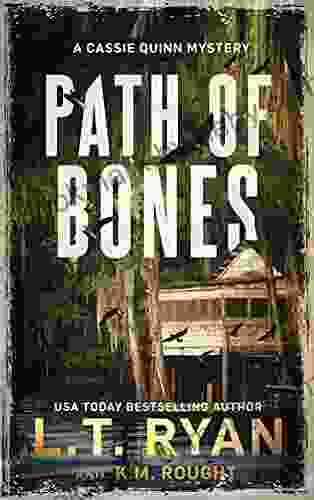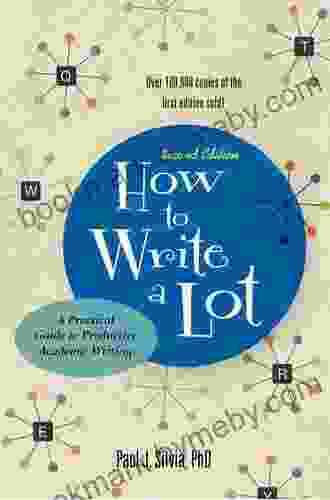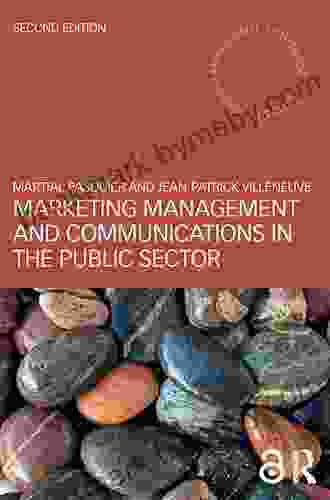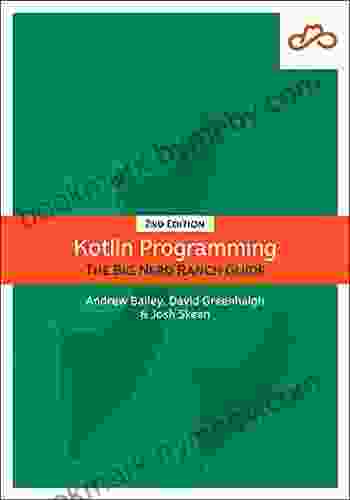The Ultimate Guide to Productive Academic Writing: A Step-by-Step Approach

4.6 out of 5
| Language | : | English |
| File size | : | 624 KB |
| Text-to-Speech | : | Enabled |
| Screen Reader | : | Supported |
| Enhanced typesetting | : | Enabled |
| Word Wise | : | Enabled |
| Print length | : | 142 pages |
Are you struggling to write academic papers that are clear, concise, and well-argued? Do you find yourself spending hours staring at a blank page, unsure of where to start? If so, then this guide is for you.
This guide will provide you with a step-by-step approach to academic writing that will help you to produce high-quality papers in a timely and efficient manner. We will cover all aspects of the writing process, from planning and research to drafting and revision.
Step 1: Planning
The first step in writing an academic paper is to plan your work. This involves brainstorming your topic, developing a thesis statement, and creating an outline.
Brainstorming your topic
The first step in planning your paper is to brainstorm your topic. This can be done by freewriting, mind mapping, or talking to your professor or classmates.
As you brainstorm, keep in mind the following questions:
- What are you interested in writing about?
- What do you know about this topic?
- What do you want to learn more about?
Once you have a list of potential topics, narrow down your choices by considering the following factors:
- The scope of the topic
- The availability of research
- Your own interests and expertise
Developing a thesis statement
Once you have chosen a topic, you need to develop a thesis statement. A thesis statement is a one-sentence statement that expresses the main argument of your paper.
To develop a thesis statement, ask yourself the following question:
- What is the main point that I want to make in this paper?
Your thesis statement should be clear, concise, and specific. It should also be arguable, meaning that it should not be a fact that everyone agrees with.
Creating an outline
Once you have a thesis statement, you need to create an outline. An outline is a roadmap for your paper. It will help you to organize your thoughts and ensure that your paper flows logically.
To create an outline, start by listing the main points that you want to make in your paper. Then, for each main point, list the supporting points that you will use to develop your argument.
Your outline should be flexible. As you write your paper, you may need to add or remove points. However, having an outline will help you to stay on track and ensure that your paper is well-organized.
Step 2: Research
Once you have a plan for your paper, you need to conduct research. This involves gathering information from a variety of sources, such as books, articles, and websites.
When conducting research, it is important to be critical of the sources that you use. Ask yourself the following questions:
- Who is the author?
- What are the author's credentials?
- Is the source biased?
- Is the source up-to-date?
Once you have gathered your research, you need to organize it. One way to do this is to create a research matrix. A research matrix is a table that lists your research sources and the key points that you have found in each source.
Creating a research matrix will help you to see how your sources fit together and will make it easier to write your paper.
Step 3: Drafting
Once you have conducted your research, you are ready to begin drafting your paper.
When drafting your paper, it is important to focus on getting your ideas down on paper. Don't worry about making your writing perfect at this stage. Just focus on getting your thoughts organized and expressed clearly.
As you write, be sure to follow the outline that you created in Step 1. This will help you to stay on track and ensure that your paper flows logically.
Step 4: Revision
Once you have finished drafting your paper, it is time to revise it. Revising involves checking your paper for errors and making sure that it is clear, concise, and well-argued.
When revising your paper, pay attention to the following elements:
- Grammar and spelling
- Clarity
- Conciseness
- Argumentation
Grammar and spelling
The first step in revising your paper is to check for grammar and spelling errors. You can do this by using a grammar checker or by having someone else proofread your paper.
Clarity
Once you have checked for grammar and spelling errors, you need to make sure that your paper is clear. This means that your writing should be easy to understand and follow.
To improve the clarity of your writing, try to use simple language and avoid jargon. You should also use headings and subheadings to break up your text and make it easier to read.
Conciseness
Your paper should also be concise. This means that you should only include information that is relevant to your argument. Avoid rambling or repeating yourself.
To improve the conciseness of your writing, try to cut out unnecessary words and phrases. You should also try to combine sentences and paragraphs where possible.
Argumentation
Finally, you need to make sure that your paper is well-argued. This means that you need to provide evidence to support your claims and that you need to address counterarguments.
To improve the argumentation of your paper, try to use specific examples and evidence to support your claims. You should also try to anticipate and address counterarguments.
Writing academic papers can be a challenging task. However, by following the steps outlined in this guide, you can produce high-quality papers in a timely and efficient manner.
Remember, the key to productive academic writing is to be organized, to conduct thorough research, and to revise your work carefully.
With practice, you will become a more confident and effective academic writer.
4.6 out of 5
| Language | : | English |
| File size | : | 624 KB |
| Text-to-Speech | : | Enabled |
| Screen Reader | : | Supported |
| Enhanced typesetting | : | Enabled |
| Word Wise | : | Enabled |
| Print length | : | 142 pages |
Do you want to contribute by writing guest posts on this blog?
Please contact us and send us a resume of previous articles that you have written.
 Book
Book Novel
Novel Page
Page Chapter
Chapter Text
Text Story
Story Genre
Genre Reader
Reader Library
Library Paperback
Paperback E-book
E-book Magazine
Magazine Newspaper
Newspaper Paragraph
Paragraph Sentence
Sentence Bookmark
Bookmark Shelf
Shelf Glossary
Glossary Bibliography
Bibliography Foreword
Foreword Preface
Preface Synopsis
Synopsis Annotation
Annotation Footnote
Footnote Manuscript
Manuscript Scroll
Scroll Codex
Codex Tome
Tome Bestseller
Bestseller Classics
Classics Library card
Library card Narrative
Narrative Biography
Biography Autobiography
Autobiography Memoir
Memoir Reference
Reference Encyclopedia
Encyclopedia Todd Schaefer
Todd Schaefer Jacques Lafaye
Jacques Lafaye Raff Ellis
Raff Ellis Instafo
Instafo Jaime Lewis
Jaime Lewis Steve Harvey
Steve Harvey Jacob T Schwartz
Jacob T Schwartz Shekiralea Healy
Shekiralea Healy Scott Hunter
Scott Hunter J D Robb
J D Robb Iris Brooke
Iris Brooke Laura Kriska
Laura Kriska Ivan Savov
Ivan Savov Rick Stein
Rick Stein Tobias Wolff
Tobias Wolff Saeed Yousef
Saeed Yousef Lee Gutteridge
Lee Gutteridge J K Gibson Graham
J K Gibson Graham Irene Danics
Irene Danics Melissa Rivers
Melissa Rivers
Light bulbAdvertise smarter! Our strategic ad space ensures maximum exposure. Reserve your spot today!

 Spencer PowellCosta Rica Folk Culture Traditions And Cuisine: A Journey into the Heart of a...
Spencer PowellCosta Rica Folk Culture Traditions And Cuisine: A Journey into the Heart of a... Esteban CoxFollow ·3.2k
Esteban CoxFollow ·3.2k Ignacio HayesFollow ·11.7k
Ignacio HayesFollow ·11.7k Jeremy CookFollow ·12.7k
Jeremy CookFollow ·12.7k Jean BlairFollow ·15.3k
Jean BlairFollow ·15.3k Anton ChekhovFollow ·5.4k
Anton ChekhovFollow ·5.4k Theo CoxFollow ·11.6k
Theo CoxFollow ·11.6k Steve CarterFollow ·8.6k
Steve CarterFollow ·8.6k Griffin MitchellFollow ·18.8k
Griffin MitchellFollow ·18.8k

 Phil Foster
Phil FosterThe Unforgettable Easter: Ramona's Journey of Discovery...
Embark on Ramona's Extraordinary Easter...

 Levi Powell
Levi PowellThe Old City and Mount of Olives: A Journey Through...
Jerusalem, a city etched into the annals of...

 Henry Hayes
Henry HayesThe Clearances: A Journey Through Scotland's Hidden...
In the 18th and 19th...

 Edward Reed
Edward ReedUnravel the Enigmatic 'Path of Bones' with Cassie Quinn...
Step into the...
4.6 out of 5
| Language | : | English |
| File size | : | 624 KB |
| Text-to-Speech | : | Enabled |
| Screen Reader | : | Supported |
| Enhanced typesetting | : | Enabled |
| Word Wise | : | Enabled |
| Print length | : | 142 pages |














